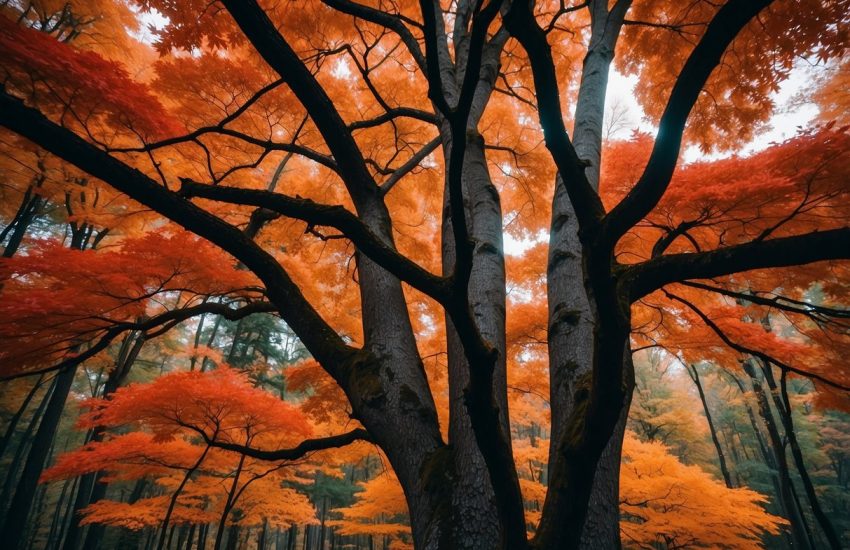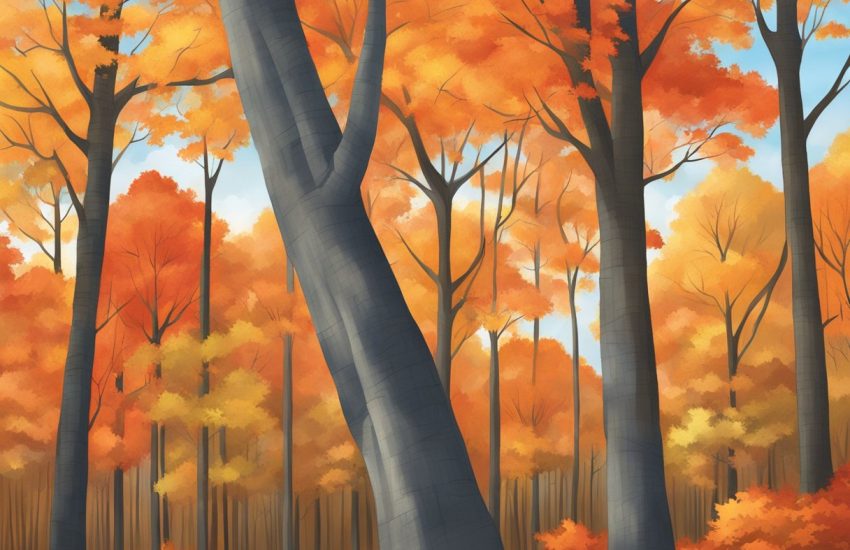Ornamental Trees For Every Hardiness Zone in South Carolina
As a coastal state, South Carolina includes planting zones from 7 to 9. Gardeners who live further inland will have a shorter growing season to contend with and a later frost risk than gardeners along the coast.
Ornamental Trees – Zone 7
The northwest corner of South Carolina is part of Zone 7. If you can draw a triangle from Rock Hill to Laurens up to the corner with the Georgia/North Carolina border, you have found Zone 7. You’ll be just southeast of the Great Smoky Mountains National Park, so if you are struggling to decide which trees to focus on, take yourself out on a hike each season and enjoy the options!
Flowering for Spring and Summer
The Blue Chinese Wisteria is a wonderful option if you have the space. While this tree doesn’t get more than 15 feet tall, the spread is up to 12 feet and, like any wisteria, this tree will grow very fast. This tree will make the bees very happy and will go from blue and green in full bloom; because it’s very easy to shape and even drape this tree, it’s an ideal option for use on top of berms and along driveways. It will turn yellow in the fall and the full shape of the tree will be visible as the winter continues.

A Forest Pansy Redbud is a wonderful way to add visual interest when the rest of your yard is just thinking about getting green. You’ll get brilliant pink buds before the deep red leaves begin to bud out. If you can plant this under a collection of trees taller than 30 feet or on the north side of your home, this tree will hold that red leaf color for much longer.

Foliage for Fall
For plenty of shade as well as fall color in northwest South Carolina, consider adding a Freeman Maple. This is a fairly cold-hearty tree; be ready to give it plenty of water during the first growing season to help it root deeply. The red fall color offered by this tree will make your yard a show-stopper! Both Armstrong and Scarlet Sunset will give you an upright shade tree with plenty of colors.
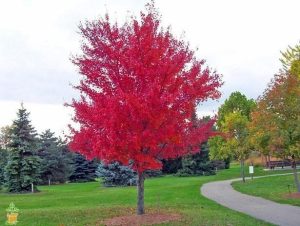
Admittedly, an O’Spring Holly tree may not give you the best fall foliage if you want something red. You can enjoy bright green, glossy leaves all winter long. However, if you’re planting wisteria or other flowering trees to keep the bees happy, a holly tree with plenty of berries can keep the birds happy. If you love to study a winter bird feeder on a chilly day, put your feeder right in front of this tree so you gain all the benefits.
Small Ornamentals
Rising Sun Redbud is an ideal choice for your landscape if you love color all summer long. This redbud is covered with fuchsia blooms all spring until the leaves come out and the leaves are colors from yellow to lime green. This small tree will top out at 12 feet tall and has a canopy of 8 feet wide at the fullest height. Many redbud trees will hold the intensity of their blossoms and leaf color if they get plenty of shade during the hottest part of the day; if you have a spot that is fairly shady that will allow this tree to spread out, it’s an ideal choice to add color to your yard. Do be aware that this shade can slow the leafing out process. Your redbud is not slow or stunted; it’s just holding onto the buds.
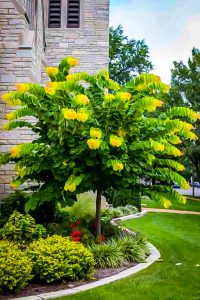
Another lovely understory tree is the Emperor Japanese Maple. The canopy of this tree is slightly narrower than the Rising Sun. Another nice feature of Japanese Maples in general is that they are naturally more open in their growth habits as they crown into maturity. If you live in a region with a habit of big storms or high winds, your Emperor has a good chance of withstanding the storm. Japanese Maples tend to be slow growing trees; take care not to crowd them. If you want more color around them as you wait for them to really fill out, consider adding floral globe shrubs in pots around the space for now.
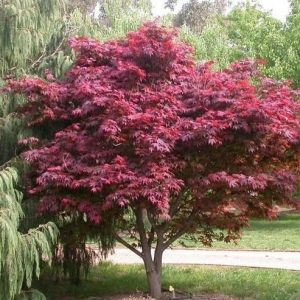
Ornamental Trees, Zone 8
Zone 8 covers the majority of the state of South Carolina. Columbia is right in the middle of this region; another way to visualize the region is to consider a diagonal swath from Greenwood up to Rock Hill and then south from Barnwell up to Bennettsville.
Flowering for Spring and Summer
If you love a floral fragrance and have the space in a flower bed or along a path, add a Witch Hazel tree to your flower beds. Not only will you enjoy the bright scent of the flowers on this tree, but the long petals can stay on this tree up to a month in the summer months.
Of course, if you have more room, try a Jacaranda tree. These trees may be a bit happier further south. If you have a sheltered spot along the south end of your house or in a cleared space where it will get plenty of light and a break from the wind, you can start a Jacaranda tree in your South Carolina yard. This tree can grow all the way to 50 feet once it gets started.
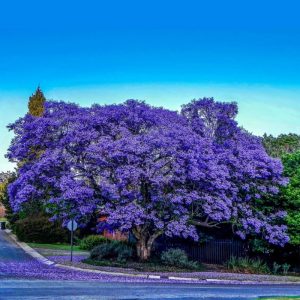
Foliage for Fall
Sassafras trees are a wonderful addition to your hard no matter the season. You’ll enjoy plenty of shade all summer long and leaves from salmon pink to deep wine depending on the variety of sassafras tree you plant. These trees can grow to 40 feet; make sure you set them in a spot where they can just fill up the sky around your home.
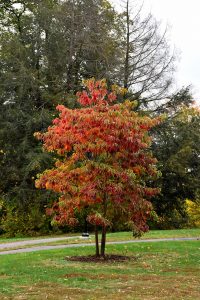
A Hornbeam tree is a bit smaller tree with lovely leaves of orange, gold and red for a long stretch of the fall. Even better, the leaves of this tree are heavily textured; visually, even the green leaves are quite striking. The lumber harvested from these trees is very hard and less likely to split. Birds and swallowtail butterflies are happy to call this tree home.
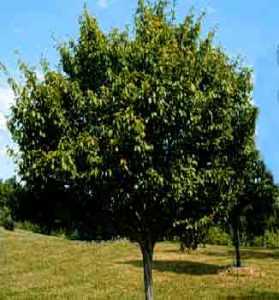
Small Ornamentals
A shrub in Zone 6 can easily be a small tree in Zone 8. Even better, many of these have a wonderful fragrance when they’re in bloom. If you love lilacs but struggle to get them to really produce in a region where freezing cold weather is rare, consider a Korean Lilac Tree. These small globes can add a great deal of elegance in a small garden and offer wonderful fragrance in the early spring season.
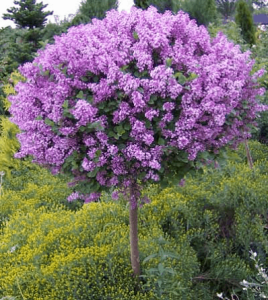
Weeping trees are also a wonderful option if you need to plant something as an understory plant or under lines that travel across your property. If you love flowering trees but have limited space in a flower bed or under an arbor, consider adding a Dwarf Weeping Larch Tree. The pale pink flowers against the very dark bark will be lovely all spring long. This tree will also work beautifully with solar lights in the fall and winter.
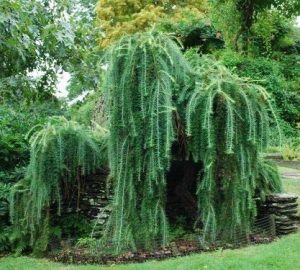
Ornamental Trees, Zone 9
Zone 9 in South Carolina includes from the coast straight west from a line from Allendale to Conway. Humidity will be higher and rainfall will likely be more intense. Many of the loveliest trees in this region also provide fruit. If you are not interested in harvesting fruit, don’t plant a fruit tree; you will just end up with pesky insects such as wasps.
Flowering for Spring and Summer
The Chickasaw Plum Tree is one of those flowering trees that just make life in Zone 9 so special. The very dark leaves will eventually leaf out green, but the white flowers against the dark wine leaf color will draw the eye all spring long. The plumbs produced by this tree area about an inch in diameter and can be served up raw or cooked down into jams and jellies. Do be aware that this tree can get up to 25 feet tall.

Another option is the Flamegold Evergreen. This is a very big tree and can get up to 50 feet tall. Early in the summer you’ll enjoy plenty of tiny yellow flowers in long clusters. These are also known as paper lantern trees; as the summer continues, 2 inch paper husks will form in a pink color. These will also bloom. Be aware that these trees can be a bit messy over time. However, if you love flowers and you need shade, this tree is a great choice.
Foliage for Fall
Add a Red Maple if you need lots of shade, you love red color and you don’t mind a bit of raking. This tree can get up to 60 feet tall. Give yourself time and get used to an empty yard when planting trees that will be big. Your maple will need some shade late in the day until it’s deeply established and feeding well. Be aware that the skin of a maple can be sensitive to intense sunlight and mowing damage; make sure you give the tree plenty of distance when mowing and trimming and mulch carefully.
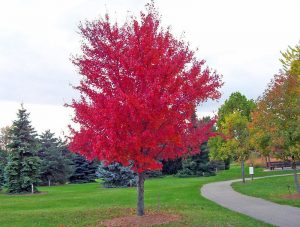
If you’ve been taking care of the bees and making room for the birds, it’s time to treat the squirrels with a Black Walnut tree. These trees can get up to 75 feet tall and will give you nuts every year. If the squirrels find them and bury them, you may have more nut trees coming up. If your yard is small, this may not be the best tree. However, if you have a very large piece of land and want some help, these trees are actually fairly easy to transplant. Give them room; your baby wood lot may look pretty sparse for a time, but you can shade out other plantings if these trees are too close together. Black walnuts are edible but some people find the flavor quite unpleasant. Be aware that the matter inside the green shell between the leathery cover and the nut can stain your hands, your kitchen tools and your clothing.
Small Ornamentals
The Fashion Azalea can be found in Gumpo White, Gumpo Rose and Gumpo Pink. Clear a space and plant them all. These only grow to 5 feet tall and have a 4 foot spread. This is a very dense shrub but will give you gorgeous color all summer long. These plants love an acidic soil; if you have any evergreen trees that gift you with many needles, rake them into your intended azalea location and let them break down as you start your planting process.
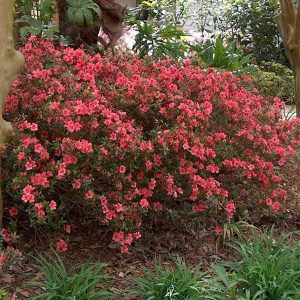
If you love fall color and have limited space, consider adding an Oakleaf Hydrangea. This shrub will grow to about 7 feet in Zone 9. The dark green foliage will turn wine red in the winter and the flowers will turn colors from cream to pink, then into lavender and ultimately bronze. Give this small tree plenty of space; it will be an interesting feature in your yard all year long.
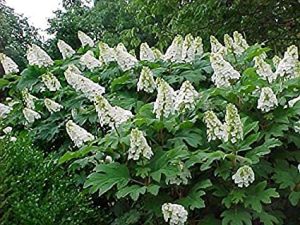
Bottom Line
South Carolina offers gardeners a great deal of variety. The further inland, you can expect colder weather. Do your best to find out what the trimming schedule needs to be to keep these plants from being too dense. High humidity can lead to center rot and disease inside very densely leaved plants.

